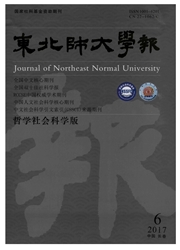

 中文摘要:
中文摘要:
"象形文字"是中国传统文字学中的一个重术语,东汉学者许慎将其定义为"象形者,画成其物,随体诘诎,日月是也。"我国学界对图画文字与象形文字在术语方面的刻意区分,理解上的含混模糊,以及把圣书文字(hieroglyph)视为象形文字等诸多问题,在很大程度上是由于误将"hieroglyph"译为"象形文字",从而与我国传统文字学术语"象形文字"相混同而导致的。象形文字只是人类文字的初级阶段,或者只是某文字体系的一种文字类型。因此,我们不可以简单地把古埃及文字称为古埃及象形文字。
 英文摘要:
英文摘要:
Generally speaking,the earliest writing is picture-writing. The term Xiangxing Wenzi is a Chinese traditional term for writing studies. Xu Shen (a scholar of Han Dynasty) defined it as "the Xiangxing,those simple pictographs that primarily represent the objects they depict, such as the characters of the Sun and the Moon". In China, the deliberate distinction between the pictograph and the Xiangxing Wenzi, and the confusion between the Xiangxing Wenzi and Hieroglyphs results from the mistranslation of Hieroglyphs into Xiangxing Wenzi. This mistake is due to the misunderstanding of Egyptian hieroglyphs for Xiangxing Wenzi ,and coinciding the Chinese traditional term Xiangxing. In fact,the Egyptian hieroglyph is not Xiangscing Wenzi, but actually an alphabetical writing. However, its "alphabets" were written in the form of pictures. Chinese people generally misunderstand Egyptian hieroglyphs for pictographs. This mistake should be corrected as soon as possible.
 同期刊论文项目
同期刊论文项目
 同项目期刊论文
同项目期刊论文
 期刊信息
期刊信息
